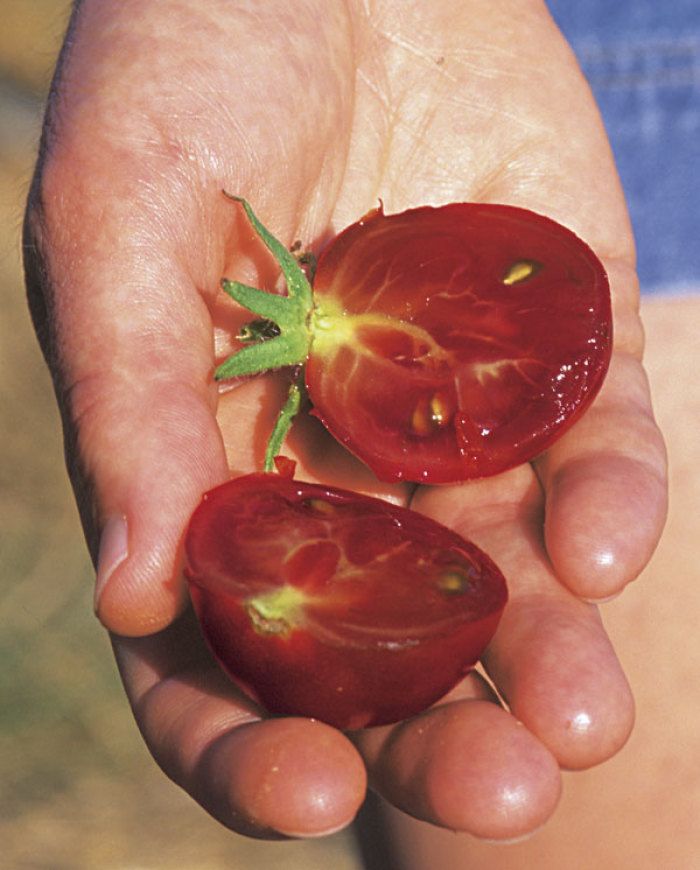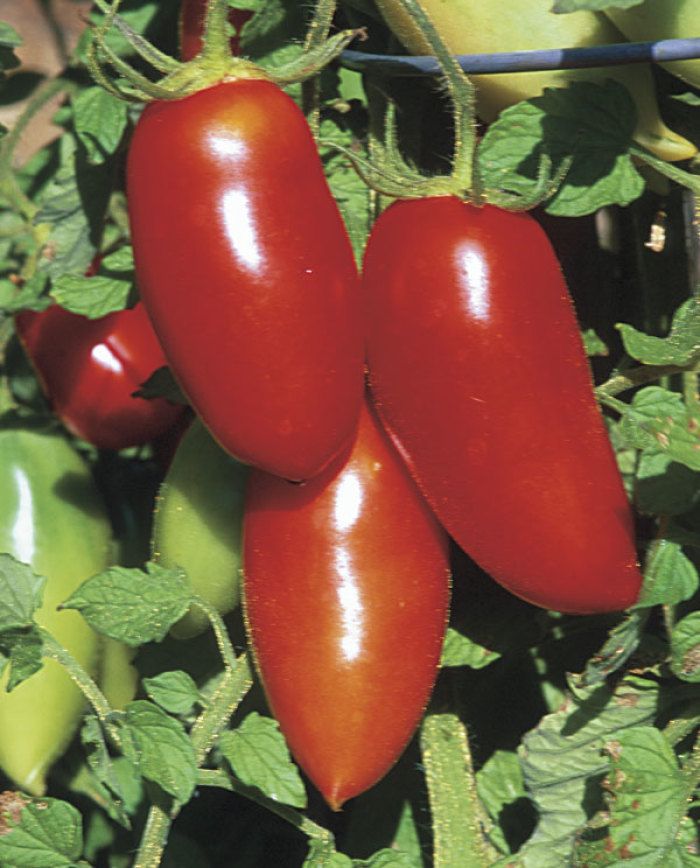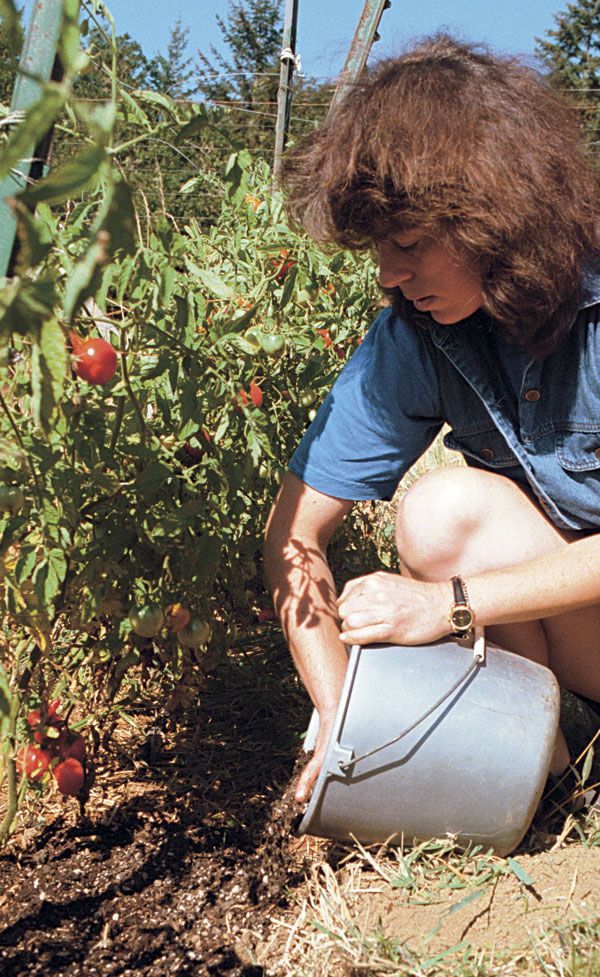
When I was a girl, my mom and I took weekly trips to the market for fruits and vegetables. Even then I was fascinated by the different apples, lettuces, peppers, and tomatoes; only there was just one kind of paste tomato, and it was always called ‘Roma’.
Gardening and canning have since become a minor obsession and a favorite pastime, and I’ve realized that it’s not one variety of paste tomato that results in the tastiest salsa, the creamiest ketchup, or the richest spaghetti sauce. That’s when I decided to put paste tomatoes to the test. I scrutinized the catalogs and talked with local market growers and gardeners. Then I added a few popular favorites like ‘Sausalito’ and ‘La Rossa’ to my list, as well as unusual varieties such as ‘Amish Paste’ and ‘Sausage’. For the next two years I grew 20 varieties in my garden so I could discover for myself if there really was any difference. Here’s what I learned.
The ever popular ‘Roma’ bombed, with lower yields than other varieties tested. I live in Oregon, and I had high hopes for ‘Oregon Pride’ and ‘Oregon Star’. I did get the giant tomatoes described in the catalog, but I also got inferior taste. ‘Royal Chico’ delivered excellent flavor but produced poorly. Two varieties I chose for their unusual characteristics—‘Black Prince’ and ‘Sausage’—surprised me the most. These two were among the best varieties.
A handful of dependable varieties
Naturally, flavor is a big factor in what makes a tomato great, but also important are disease resistance, productivity, texture, and ripening time. It doesn’t matter how flavorful a tomato is if the growing season is over long before it ripens. The six varieties that came out on top are ‘Black Prince’, ‘Early Cascade’, ‘Italian Gold’, ‘Saucy’, ‘Sausage’, and ‘Viva Italia’. Each produces well and has great flavor in good and bad growing seasons alike. These six can be grown in any region where the average tomato can ripen, especially when starting with seedlings.
Originally from Siberia, ‘Black Prince’ has a rich, deep garnet color I love. Like a chameleon, the color changes depending on where you live. Increased sun and heat encourages a deeper color, with an almost chocolate glow. The round, egg-size fruits ripen early on indeterminate but restrained vines. I use ‘Black Prince’ fresh in salads and pasta dishes, or combined with ‘Viva Italia’ for sensational salsa.
‘Early Cascade’ is a very early, disease-resistant, and vigorous plant that performs especially well when staked or caged. The rounded, slightly heart-shaped fruits produce an almost continuous bumper crop of tomatoes right until the end of the season.
 |
 |
|||
| ‘Early Cascade’ offers vigorous, disease-resistant plants and a harvest early in the season. | ‘Black Prince’ is a handsome tomato with rich color and rich flavor. | |||
‘Italian Gold’ puts on a show-stopping performance with its beautiful golden-yellow fruits and prolific yields. Easy to peel, ‘Italian Gold’ is high in pectin, and its refreshing taste makes it perfect for canning and freezing.
No paste tomato is perfect for every need, but ‘Early Cascade’ and ‘Italian Gold’ come close. The fruits are a match for just about every need, although ‘Early Cascade’ may not produce the thickest ketchup and sauces. Both are easy to peel, making them the ultimate for canning.
When space is at a premium, plant ‘Saucy’. Its determinate, disease-resistant vines are very compact but prolific. The easy-to-peel fruits grow in clusters that hold well on the vine until you’re ready for them. Use ‘Saucy’ fresh or with pasta for salsa making or canning.
‘Sausage’ really surprised me for several reasons. The indeterminate plant can grow quite tall, and the meaty fruit, shaped like its namesake, can grow up to 6 inches. A dependable heirloom variety, ‘Sausage’ comes into full production later in the season, when there is less garden work and more time to devote to putting up the harvest.
 |
 |
 |
||
| Plant ‘Saucy’ when you don’t have a lot of space to spare, but want a multi-purpose paste tomato. | ‘Italian Gold’ has many fine qualities, including firm flesh, bright looks, and good disease resistance. | ‘Sausage’ produces prolifically during the later part of the season, when you’re ready to harvest and can. | ||
A mid-season tomato, ‘Viva Italia’ is one of the first hybrid Italian paste-type tomatoes developed. This variety resists many diseases, including bacterial speck, a leaf spot disease that thrives in cool, wet conditions. Although ‘Viva Italia’ is determinate, the vines grow vigorously, holding abundant, pear-shape tomatoes. This easy-to-grow variety produces throughout the season and even sets fruit during hot weather. The fresh, zesty flavor of ‘Viva Italia’ is excellent in salads, and it holds up to canning, cooking, or freezing. It’s my number-one choice for a piquant sauce, and the flavor livens up any salsa, particularly when combined with ‘Black Prince’.
Optimum conditions improve flavor
Even the most flavorful variety can suffer an unsavory fate when raised in an environment with too much of some things or not enough of others. Too much nitrogen will encourage foliage growth at the expense of fruit production. Excess water can affect flavor, so don’t overwater once tomatoes have reached full size and are beginning to change color. Other factors that can weaken tomato flavor are insufficient heat and light. Always give tomatoes your sunniest spot: six hours or more of direct sun a day.
 |
|
| Mulch tomatoes to help prevent moisture fluctuation, which can lead to blossom-end rot. | |
If finding a spot with adequate sun is a problem, try bringing more light and heat to your plants by laying down a mulch of heat-soaking materials, such as rocks or black slate. Studies have also shown improved yields and flavor by using materials like the IRT (Infrared Transmitting) mulch or the newer red-colored mulch developed by the USDA and Clemson University. The IRT mulch works by absorbing infrared radiation, which heats up the soil. The red plastic reflects far-red light up into the growing plants. The Agricultural Research Service, U.S. Department of Agriculture, reports that the red plastic yields up to a 20 percent increase in production when compared to black mulch.
To bring more light and heat to the fruit, stake, trellis, or cage your plants. Lighten up heavy clay soil by working in compost or other organic materials. This will not only benefit the harvest, but the organic matter will open up the soil, allowing air and water to penetrate better.
A soil test can go a long way in helping you determine how much fertilizer to apply to your plants. Tomatoes require ample amounts of phosphorus, potassium, and calcium, and even though you shouldn’t overdo the nitrogen, it also is needed for healthy plants. My plants get a side-dressing of well-rotted manure, but compost also works. Rock dust applied at the rate of 10 pounds per 100 square feet or a kelp foliar spray will add plenty of valuable flavor-producing trace minerals.
Once your plants are established, water deeply and keep the soil moisture even; mulching will reduce water loss. When soil moisture fluctuates, blossom-end rot may develop in susceptible plants. This is commonly caused by a calcium deficiency, and moisture fluctuations can interfere with the uptake of calcium. A calcium imbalance can also occur if the soil has too much magnesium, so don’t use dolomitic limestone, which is high in magnesium. Before planting, add crushed eggshells or oyster shells to the soil to help prevent the problem.
Two other diseases that can also be prevented by organic methods are tobacco mosaic virus and tomato blight. Tobacco mosaic virus can exist in dried tobacco and can be spread from smoking or even handling cigarettes or other tobacco products. If you smoke, don’t do so around your tomato plants, and be sure to wash your hands before going in the garden.
A tea made from the horsetail plant (Equisetum hyemale) may protect plants against tomato blight. To make the tea, boil the horsetail plant, fresh or dried, for about 20 minutes. Strain and dilute to a nice tea color and then spray or mist the plant before blight hits. I have also found this to be effective for mildews, rusts, and other fungal diseases.
Experience has shown me that the best salsa or spaghetti sauce has as much to do with the type of tomato used and how it was grown as it does with the recipe. For flavorful food that’s hard to resist, grow the best in paste tomatoes.
| Sources for paste tomatoes | |
| Nichols Garden Nursery 1190 Old Salem Road NE Albany, OR 97321-4580 800-422-3985 www.nicholsgardennursery.com |
Tomato Growers Supply PO Box 60015 Fort Myers, FL 33906 239-768-1119 www.tomatogrowers.com |
| Territorial Seed Company PO Box 158 Cottage Grove, OR 97424 800-626-0866 www.territorialseed.com |
Totally Tomatoes 334 W Stroud Street Randolph, WI 53956 800-345-5977 www.totallytomato.com |
by Kris Wetherbee
April 2000
from issue #26
Fine Gardening Recommended Products

A.M. Leonard Deluxe Soil Knife & Leather Sheath Combo
Fine Gardening receives a commission for items purchased through links on this site, including Amazon Associates and other affiliate advertising programs.

Gardener's Log Book from NYBG
Fine Gardening receives a commission for items purchased through links on this site, including Amazon Associates and other affiliate advertising programs.

Berry & Bird Rabbiting Spade, Trenching Shovel
Fine Gardening receives a commission for items purchased through links on this site, including Amazon Associates and other affiliate advertising programs.
























Comments
Log in or create an account to post a comment.
Sign up Log in